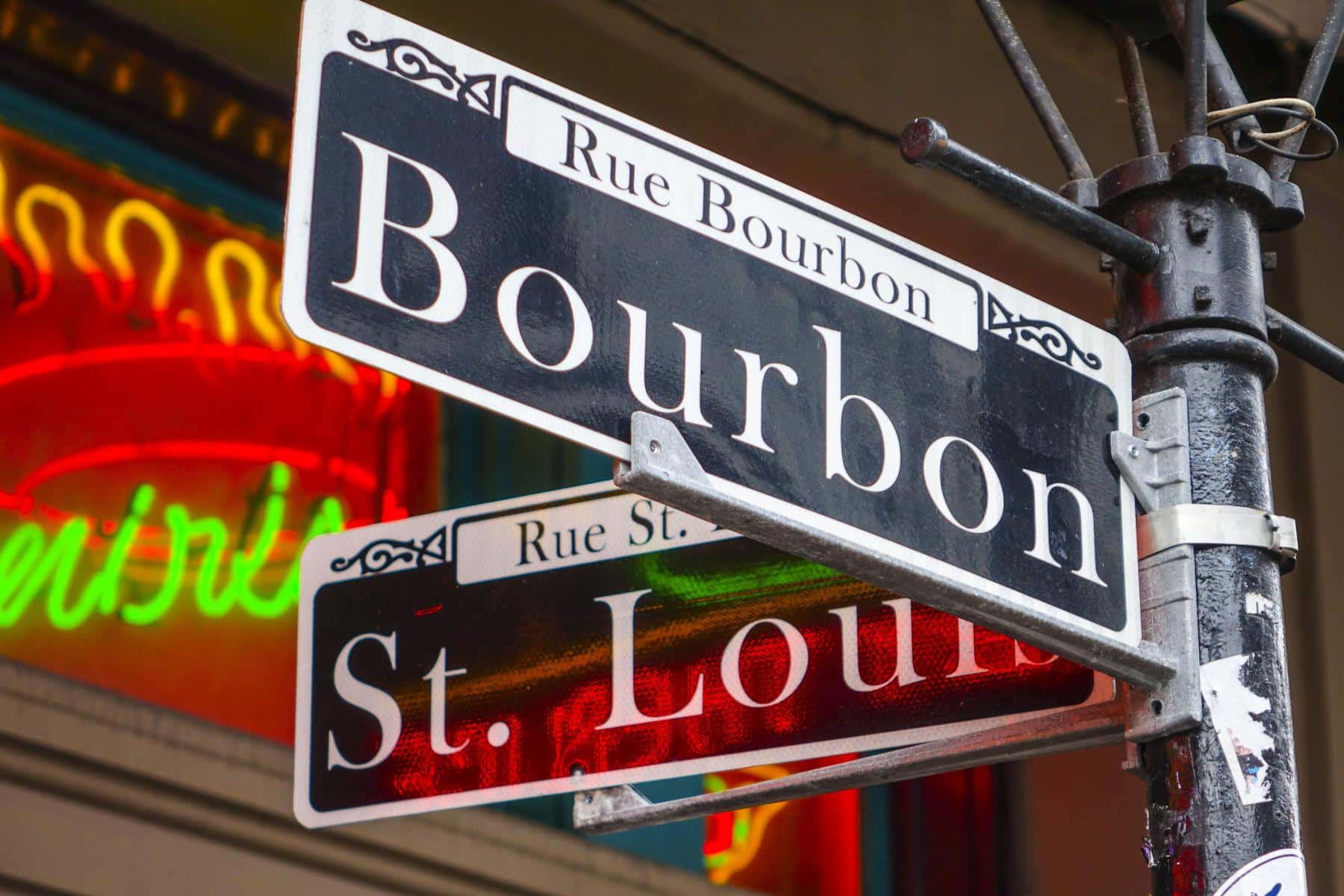
Article Summary: New Orleans Landmarks
New Orleans Landmarks. More Than Just Parks has 10 incredible must-see sites for you to visit.
There’s so much more to this exciting place than the New Orleans Saints. In this article, we’ll familiarize you with the incredible landmarks located in the Big Easy.
We’ve got incredible places, iconic memorials, fascinating museums, epic monuments and so much more.
We’re going to give you our list of the Top 10 Landmarks In New Orleans.
So, What Is A Landmark?
Well, it’s a place of “a special character or special historical or aesthetic interest or value as part of the development, heritage, or cultural characteristics of a city, state, or nation.”
Why visit these places? Because landmarks connect us to the past. Through visiting these wonderful places where history occurred we find our roots. It allows us to feel like we are a part of something much bigger than ourselves.
And, speaking of history, did I mention that I taught the subject? I spent a lifetime teaching about the history behind many of these amazing sites. Then I got to see them firsthand. And now I’m sharing the fascinating stories of these places with you. It doesn’t get any better than that!
So, without further ado, let’s dive in.
Table of Contents: New Orleans Landmarks
New Orleans Landmarks
Some Fascinating Facts About New Orleans
Here are some fascinating facts about New Orleans:
- French Influence: New Orleans has a strong French influence due to its colonial history. It was founded by the French in 1718 and remained a French territory until 1803 when it was sold to the United States as part of the Louisiana Purchase.
- Mardi Gras: New Orleans is famous for its Mardi Gras celebrations, which attract millions of visitors each year. Mardi Gras, also known as “Fat Tuesday,” is a carnival season leading up to Lent, and it is celebrated with parades, parties, colorful costumes, and the throwing of beads and other trinkets.
- Jazz Music: New Orleans is considered the birthplace of jazz, a unique and influential genre of music. Legendary musicians like Louis Armstrong, Jelly Roll Morton, and Sidney Bechet all hailed from New Orleans. The city still hosts numerous jazz festivals and has a vibrant live music scene.
- Creole Cuisine: New Orleans is renowned for its delicious and distinctive cuisine. Creole cuisine is a blend of French, Spanish, African, and Caribbean influences. Signature dishes include gumbo, jambalaya, crawfish étouffée, beignets, and po’ boys. The city also has a strong coffee culture with its unique style of coffee known as chicory coffee.
- Streetcars: New Orleans is one of the few cities in the United States that still operates a streetcar system. The iconic streetcars, dating back to the 19th century, traverse the city’s historic neighborhoods, including the famous St. Charles Avenue line, offering residents and visitors an enjoyable way to explore the city.
- Unique Architecture: New Orleans features a diverse range of architectural styles, including French, Spanish, Creole, and American Victorian. The French Quarter is particularly known for its distinctive ironwork, colorful facades, and charming balconies.
- Above-Ground Cemeteries: Due to the city’s high water table, traditional below-ground burials are challenging. As a result, New Orleans has unique and picturesque above-ground cemeteries, known as “Cities of the Dead.” St. Louis Cemetery No. 1, one of the most famous cemeteries in the city, is the final resting place of many notable figures, including Marie Laveau, the legendary voodoo queen.
- Festivals and Parades: New Orleans is renowned for its festive spirit and hosts numerous festivals and parades throughout the year. Besides Mardi Gras, the city celebrates events like the Jazz & Heritage Festival, French Quarter Festival, Essence Festival, and the lively second-line parades, which are part of the city’s cultural fabric.
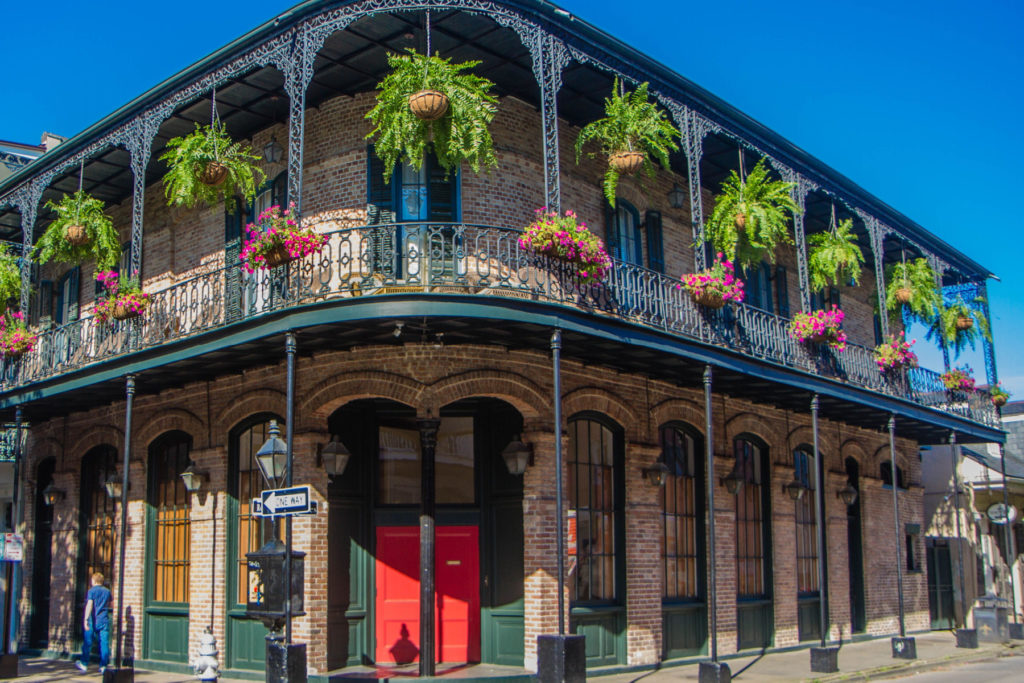
Top 10 New Orleans Landmarks
10. Bourbon Street
More Than Just Parks is excited to share our list of the Top 10 New Orleans Landmarks with you. And we’re kicking off our list with a place known for its vibrant nightlife, lively atmosphere, and historic significance.
This street’s history dates back to the city’s early colonial period and has undergone several transformations throughout the years. Welcome to Bourbon Street!
In the early 18th century, when New Orleans was founded by the French, Bourbon Street did not exist. The area was originally a dirt path located on the outskirts of the city, named Rue Bourbon after the French royal family. At that time, the street served as a dividing line between the French Quarter and the plantation fields beyond.
As New Orleans grew and evolved, Rue Bourbon expanded and became more developed. The street began to take shape in the late 18th and early 19th centuries with the construction of buildings, including residential homes, businesses, and small shops. The street’s proximity to the Mississippi River made it a hub of activity for trade and commerce.
Entertainment & Music
By the mid-19th century, Bourbon Street started to establish itself as an entertainment district. The street became home to theaters, dance halls, saloons, and gambling establishments, attracting locals and travelers alike. It was during this time that the street gained a reputation for music and live performances, with jazz and ragtime music becoming increasingly popular.
Like many parts of the United States, Bourbon Street was affected by Prohibition in the 1920s. During this period, speakeasies and illegal drinking establishments operated clandestinely in the area, catering to those seeking alcohol. The street became synonymous with underground activities and a sense of rebellion against the prohibition laws.
Following World War II, New Orleans experienced a revitalization, and Bourbon Street regained its reputation as an entertainment hot-spot. The street saw the emergence of nightclubs, burlesque shows, jazz clubs, and adult entertainment venues. The area attracted artists, musicians, and tourists looking for a lively and bohemian atmosphere.
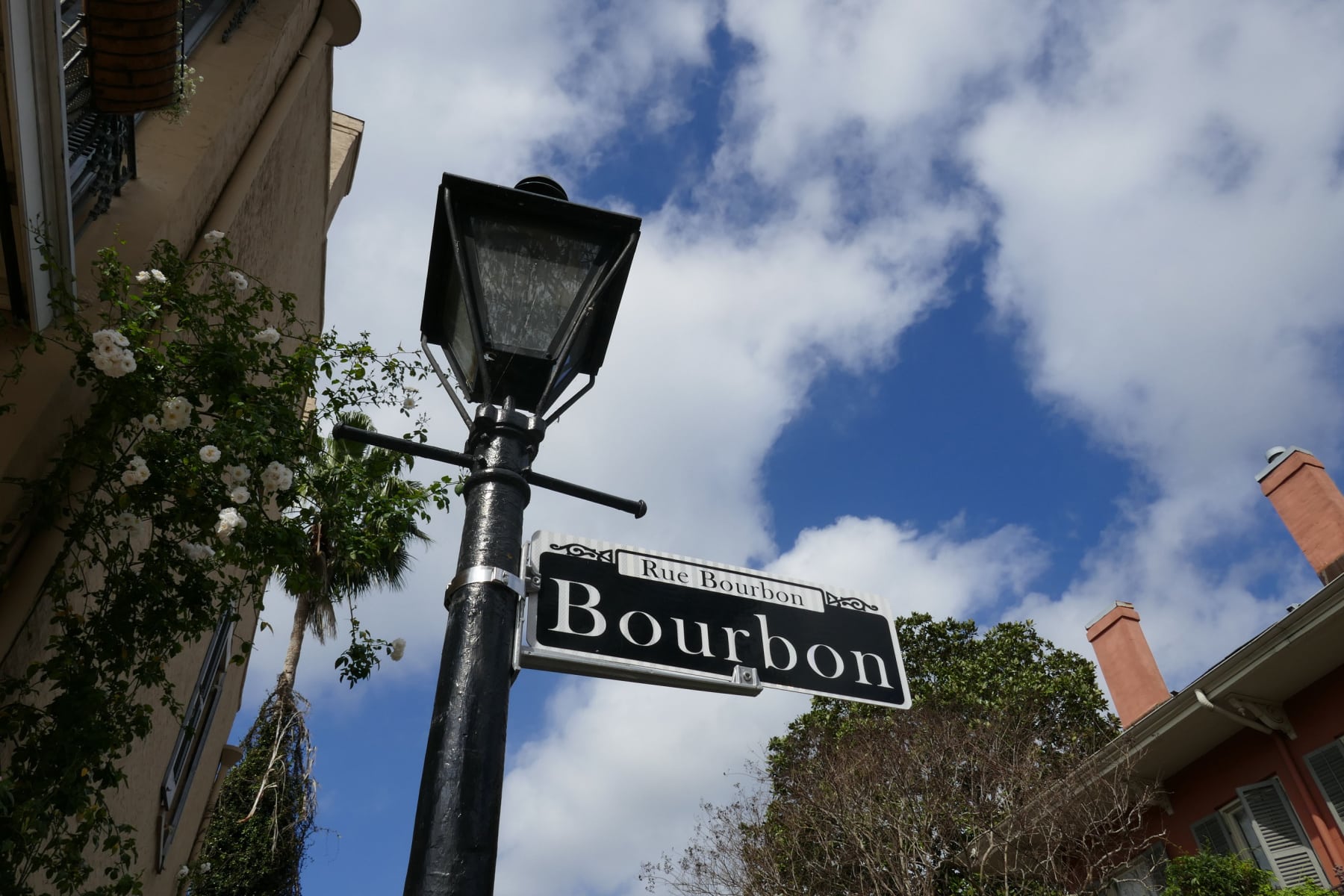
Bourbon Street Today
In the 1960s, as the preservation movement gained momentum, efforts were made to protect and restore the historic buildings on Bourbon Street and throughout the French Quarter. The street’s unique architecture, with its distinctive balconies and ironwork, was preserved, and strict zoning laws were implemented to maintain its character.
Today, Bourbon Street remains a major tourist destination and a centerpiece of New Orleans’ vibrant nightlife. It is lined with bars, restaurants, music clubs, souvenir shops, and street performers.
The street comes alive at night, especially during events like Mardi Gras and Jazz Fest, drawing crowds of revelers looking to enjoy the lively atmosphere and experience the spirit of New Orleans.
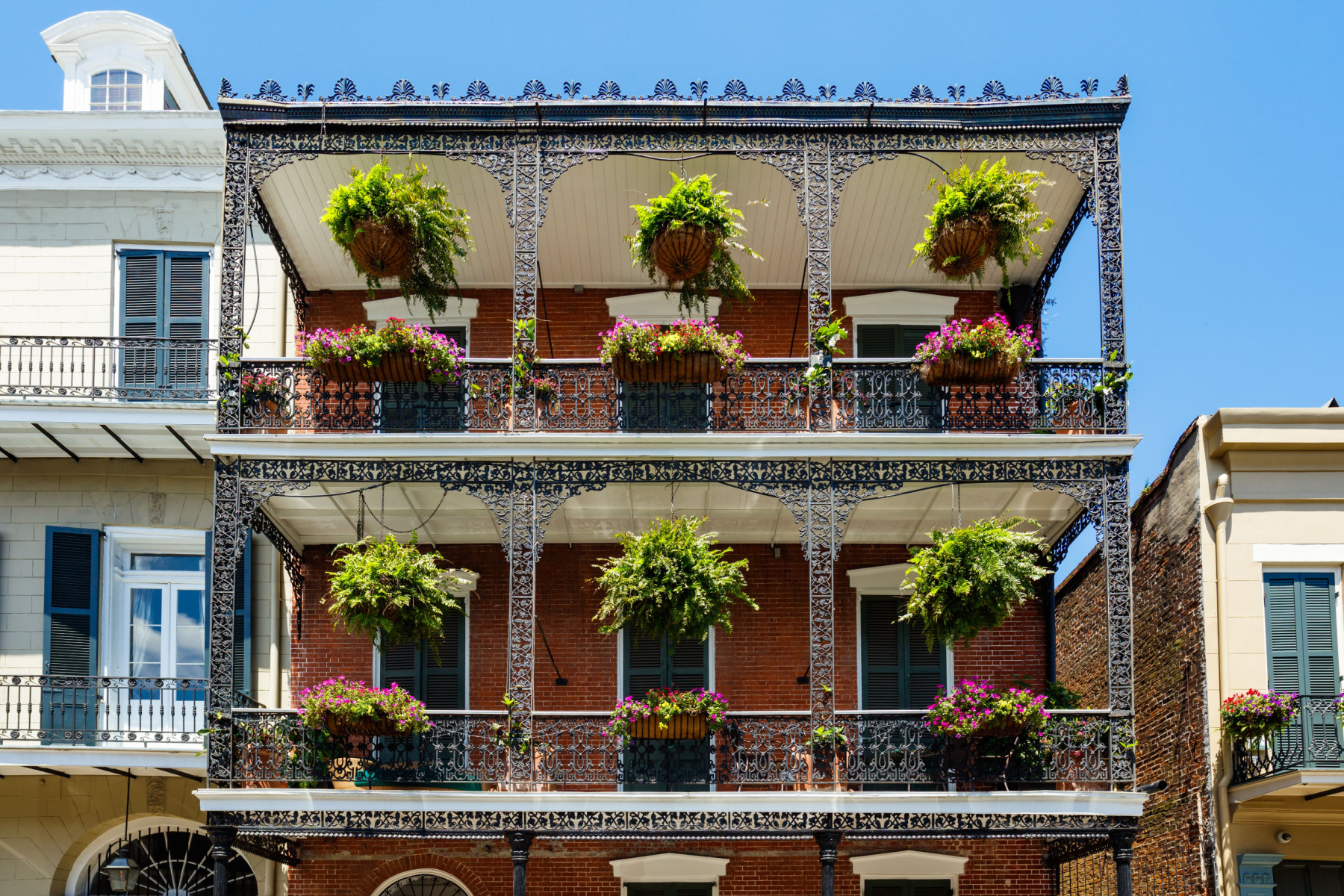
9. Historic Garden District
Our next New Orleans landmark was dubbed the “Garden District” by travel writers as early as 1852. In addition to its grand residences, the area is made up of more modest homes in many sizes and styles, as well as a cemetery. At #9 on our list of the Best New Orleans Landmarks is the Historic Garden District.
The Garden District was originally developed in the early 19th century as a result of the expansion of the city of New Orleans. It was established as a residential area for the city’s wealthy and affluent residents who sought to move away from the bustling French Quarter.
It features a diverse range of architectural styles, reflecting the changing tastes and influences of the time. The district is renowned for its Greek Revival, Italianate, and Victorian mansions, many of which were designed by prominent architects of the era. The grandeur and elegance of the architecture contribute to the district’s unique charm and character.
In the mid-19th century, the expansion of the St. Charles Avenue streetcar line played a significant role in the growth and development of the Garden District. The streetcar line made it easier for residents to commute to the city center and allowed the district to flourish as a desirable residential area.
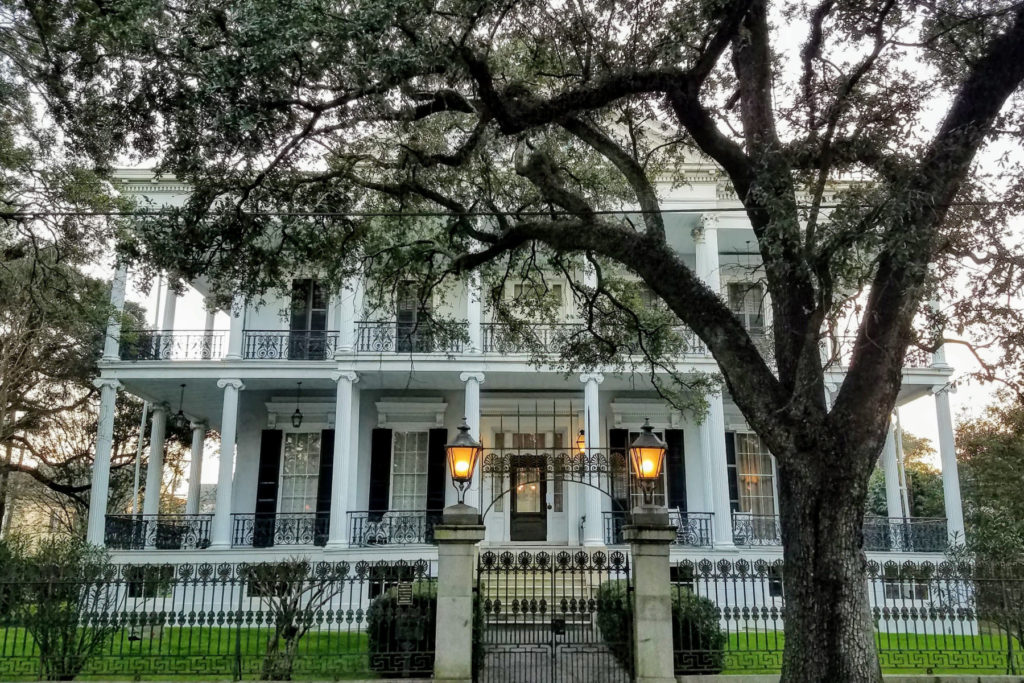
It’s Home To Many Notable Residents
Over the years, the Garden District has been home to many notable residents, including wealthy merchants, politicians, and artists. Prominent figures such as author Anne Rice, actor John Goodman, and journalist John Kennedy Toole have lived in the district, adding to its cultural and historical significance.
In the 20th century, efforts were made to preserve the architectural heritage of the Garden District. The district was designated as a National Historic Landmark in 1974, recognizing its architectural and historical significance. Preservation organizations and strict zoning regulations have helped maintain the district’s unique character and charm.
The Garden District derives its name from the lush gardens and green spaces that adorn the neighborhood. The district’s streets are lined with majestic oak trees, and many properties boast beautifully manicured gardens and courtyards. The combination of stunning architecture and verdant landscapes creates a serene and enchanting atmosphere.
The Garden District has become a popular destination for tourists seeking to experience the charm of historic New Orleans. Visitors can take guided walking tours to explore the district’s architectural gems, visit Lafayette Cemetery No. 1, which dates back to 1833, and immerse themselves in the district’s rich history and culture.
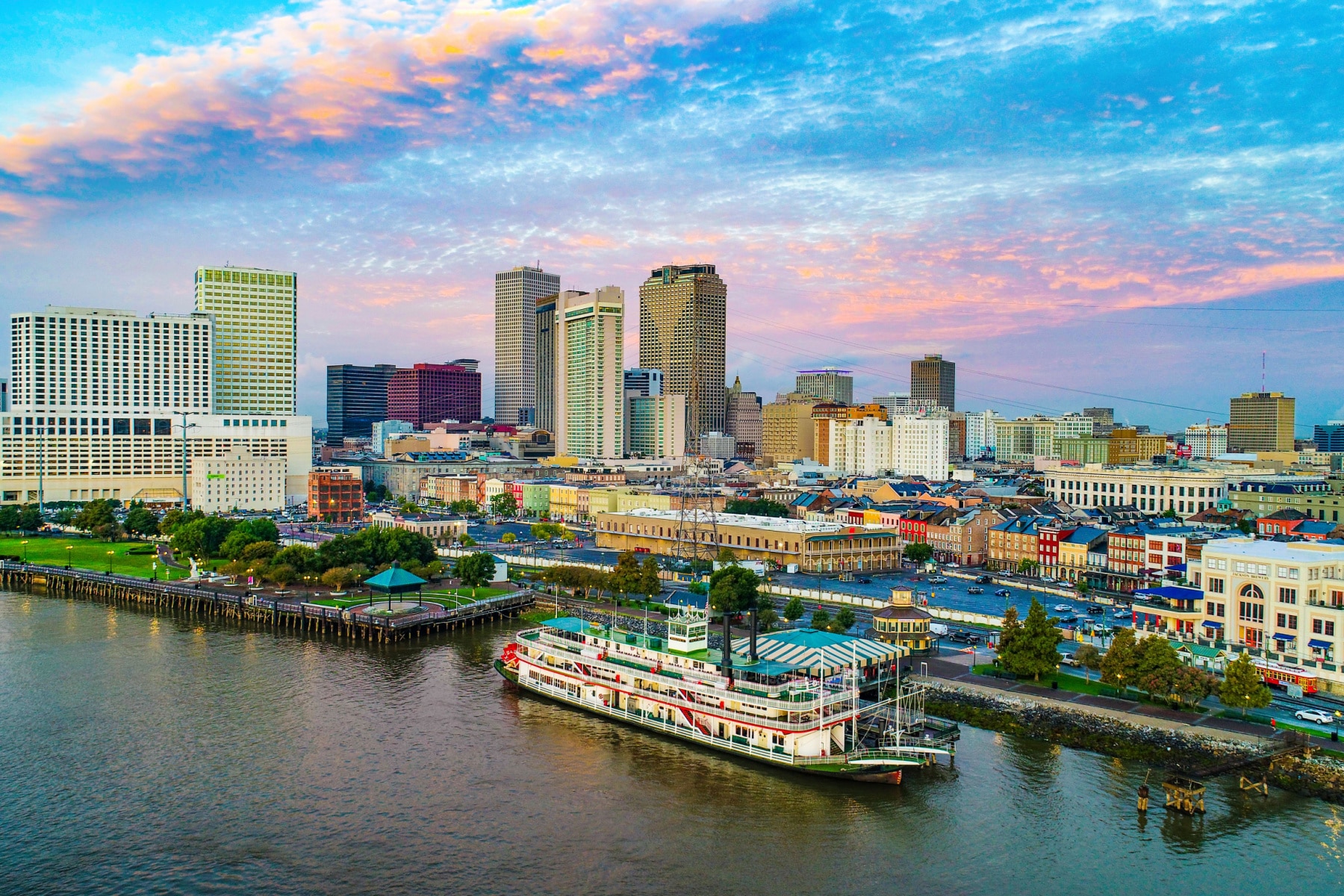
8. Preservation Hall
Our next New Orleans landmark was a rare space in the South where racially-integrated bands and audiences shared music together during the Jim Crow era. At #8 on our list of the Best New Orleans Landmarks is Preservation Hall.
Preservation Hall was established in 1961 by Allan Jaffe and his wife, Sandra. Originally, it was an art gallery located in a 1750s Creole townhouse on St. Peter Street in the French Quarter. The Jaffes had a vision of creating a space where traditional New Orleans jazz, an important part of the city’s musical heritage, could be performed and celebrated.
Soon after opening the gallery, the Jaffes formed the Preservation Hall Jazz Band, a group of local musicians who played in the traditional New Orleans jazz style. The band featured legendary musicians such as George Lewis, Kid Thomas Valentine, and Sweet Emma Barrett.

Preservation Efforts
The name “Preservation Hall” signifies the commitment to preserving the musical traditions and cultural heritage of New Orleans jazz. The hall became a sanctuary for the preservation and performance of traditional jazz at a time when the genre was facing challenges from modern styles.
As Preservation Hall gained popularity, the space transitioned into a dedicated music venue. The intimate setting, with its simple wooden benches and minimal decor, creates an authentic and intimate experience, transporting visitors back to the early days of jazz.
Preservation Hall played a vital role in revitalizing interest in traditional jazz both within New Orleans and around the world. Its performances and recordings helped introduce and educate new generations about this unique form of American music. The hall became an essential destination for jazz enthusiasts and tourists alike.
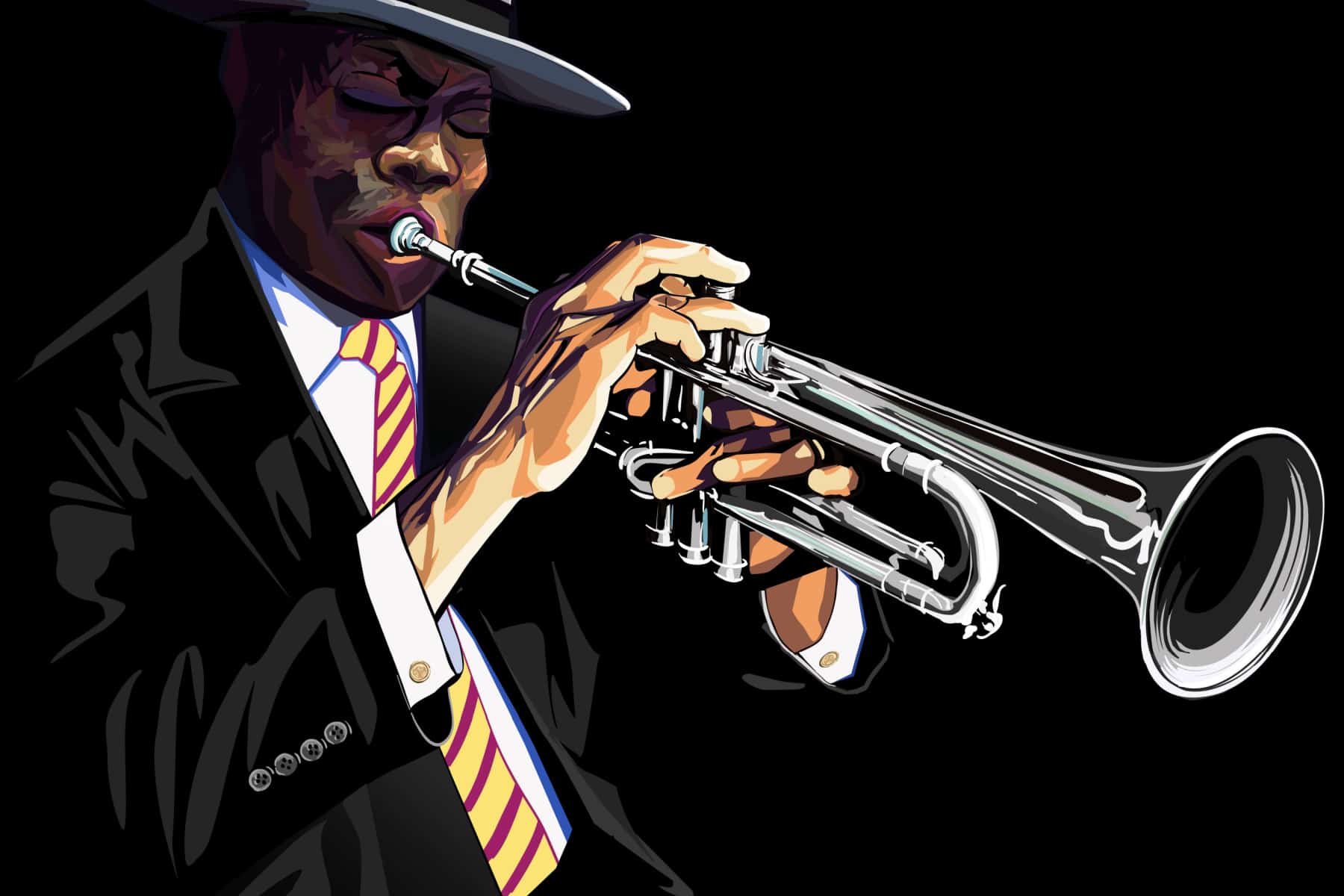
Preservation Hall In The Modern Era
Over the years, Preservation Hall faced challenges, including damage from Hurricane Katrina in 2005. However, the venue bounced back and underwent renovations, ensuring its continued presence as a vibrant cultural institution.
Today, Preservation Hall stands as a beloved venue that showcases traditional jazz and perpetuates the legacy of New Orleans music.
The Preservation Hall Jazz Band continues to perform and tour worldwide, bringing the spirit of New Orleans and the rich tradition of jazz to audiences everywhere.
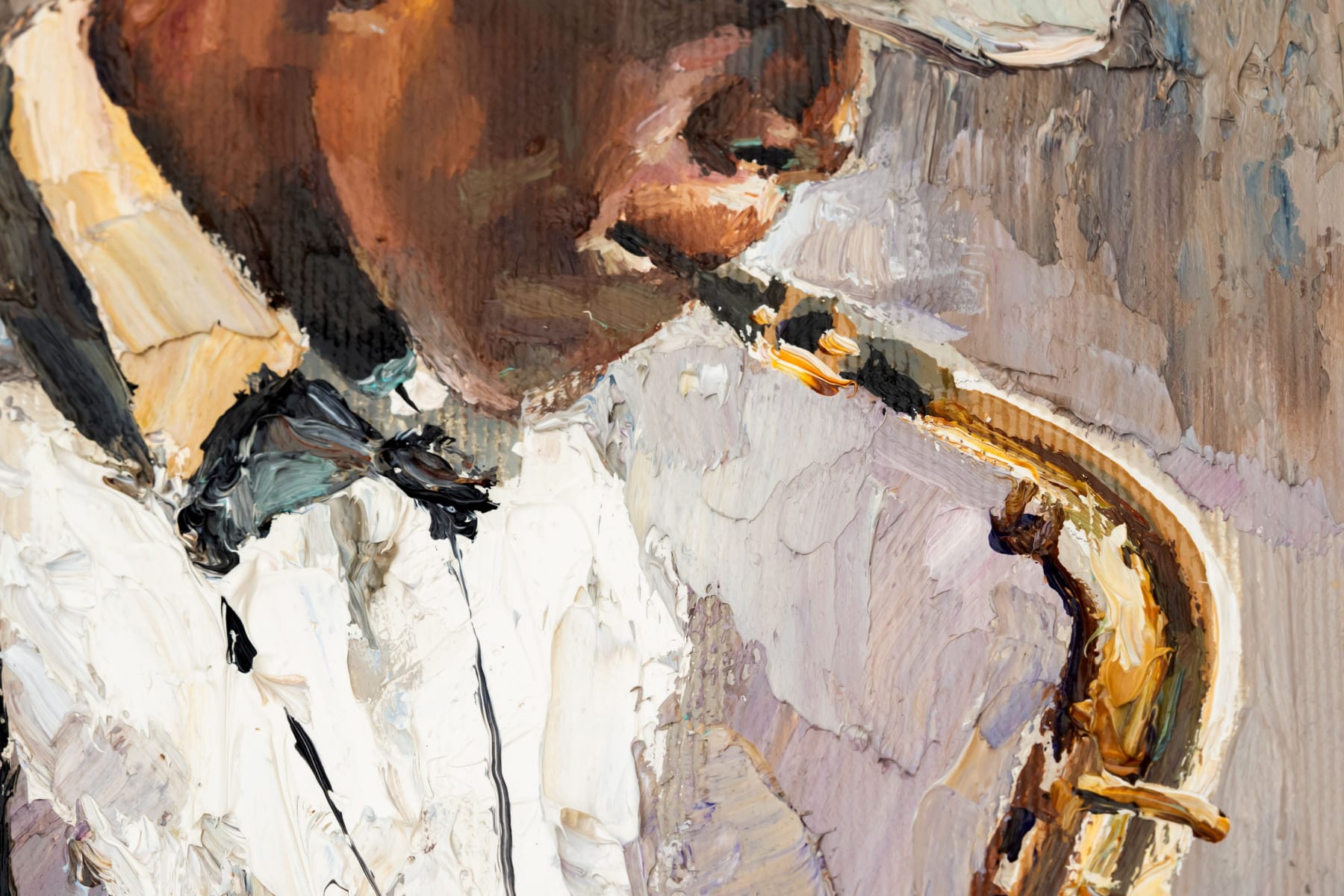
7. St. Louis Cemetery No. 1
Our next New Orleans landmark holds the distinction of being the oldest extant cemetery in the City of New Orleans. At #7 on our list of the Best New Orleans Landmarks is St. Louis Cemetery No. 1.
St. Louis Cemetery No. 1 was established in 1789. It was consecrated as a burial ground by the Catholic Church and quickly became a final resting place for a diverse range of individuals, including prominent citizens, immigrants, and people from various backgrounds.
The unique architectural feature of St. Louis Cemetery No. 1 is its above-ground tombs, or “ovens” as they are sometimes called. Due to the city’s high water table and frequent flooding, traditional below-ground burials were challenging. As a result, the custom of above-ground tombs became prevalent in New Orleans, with St. Louis Cemetery No. 1 showcasing the city’s distinctive burial practices.
The cemetery is the final resting place of many notable figures, including renowned voodoo priestess Marie Laveau. Her tomb, marked by the “X” graffiti left by visitors seeking blessings or favors, has become a popular pilgrimage site. Other notable individuals buried in St. Louis Cemetery No. 1 include the Delphine LaLaurie family, whose mansion became the subject of infamous legends, and famous chess player Paul Morphy.
Historical Significance
St. Louis Cemetery No. 1 reflects the multicultural and multi-religious heritage of New Orleans. It holds a mix of Catholic, Protestant, Jewish, and non-denominational burials, showcasing the city’s diverse population and religious traditions. The cemetery serves as a historical record of the city’s past, with its tomb inscriptions and architecture providing insights into the lives and stories of the people interred there.
Over the years, St. Louis Cemetery No. 1 faced various challenges, including neglect, vandalism, and damage from natural disasters like hurricanes. However, there have been ongoing efforts to preserve and restore the cemetery. In recent years, the Archdiocese of New Orleans, local preservation organizations, and concerned citizens have taken measures to protect and maintain this significant cultural site.
St. Louis Cemetery No. 1 attracts numerous visitors from around the world who are intrigued by its historical and cultural significance. Guided tours are available to explore the cemetery and learn about its history, architecture, and notable burials. These tours provide insights into the rich tapestry of New Orleans’ past and the unique burial customs of the city.
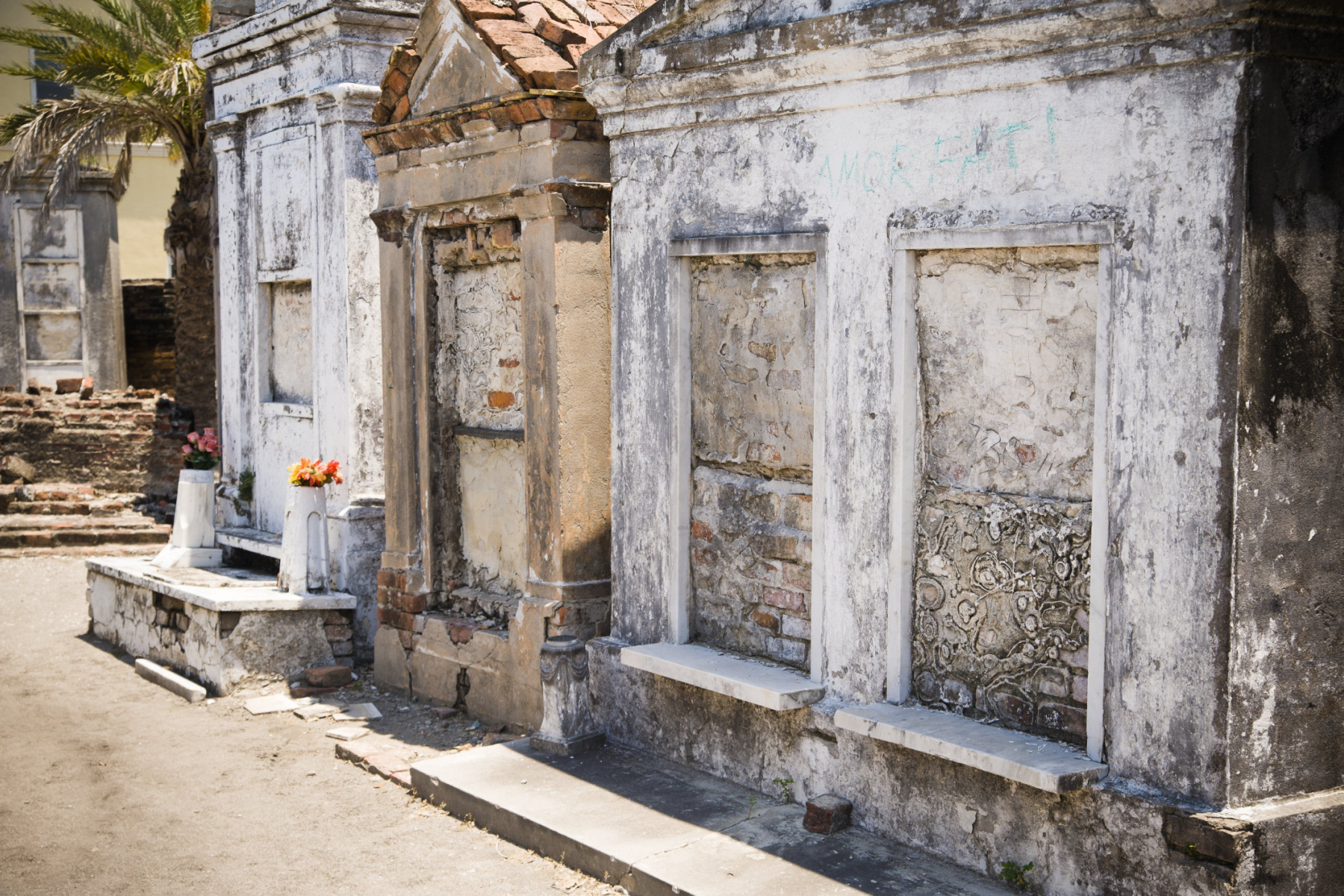
6. Chalmette National Historical Park
Our next New Orleans landmark was established during the Civil War and holds more than 14,000 graves of Americans from the War of 1812 to the Vietnam War. It commemorates the Battle of New Orleans, a crucial event in American history during the War of 1812.
At #6 on our list of the Best New Orleans Landmarks is Chalmette National Historical Park.
The Battle of New Orleans took place on January 8, 1815, during the War of 1812 between the United States and Great Britain. The battle occurred at Chalmette, a small community southeast of New Orleans. American forces, led by Major General Andrew Jackson, successfully defended the city against a British invasion force, which sought to gain control of the important port.
Chalmette National Historical Park encompasses the area where the Battle of New Orleans was fought. The park covers approximately 2,000 acres and includes the battlefield, the Chalmette National Cemetery, the Malus-Beauregard House, and the visitor center.
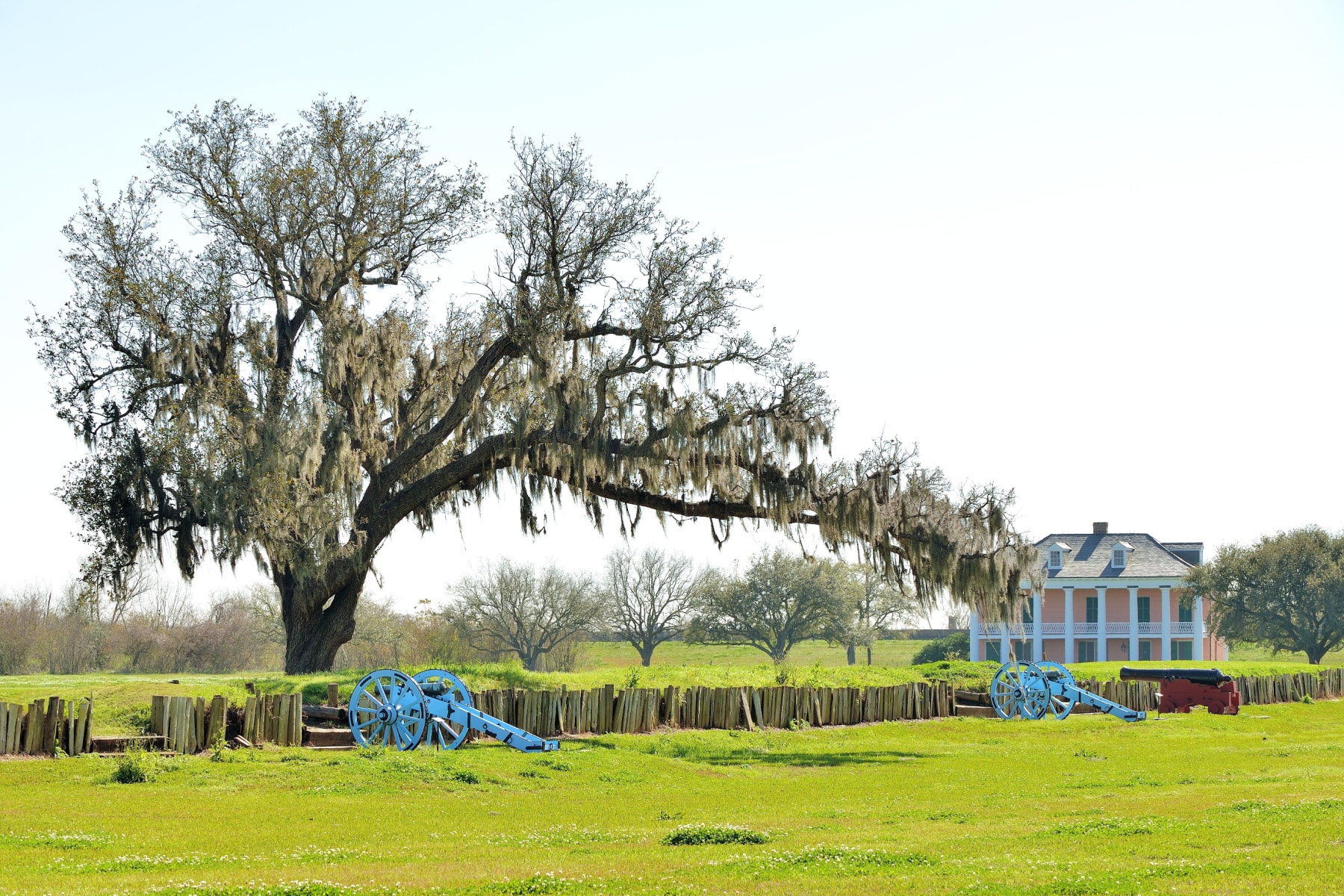
Establishment Of The Park
Chalmette National Historical Park was established in 1939 to preserve and interpret the historical significance of the battle. The park’s mission is to educate visitors about the battle’s importance, its impact on American history, and the diverse people who fought in the conflict.
Located within the park, Chalmette National Cemetery is the final resting place for thousands of soldiers, including those who fought in the Battle of New Orleans, the Civil War, and other conflicts. The cemetery serves as a solemn reminder of the sacrifices made by those who fought for their country.
Over the years, efforts have been made to preserve and restore the battlefield and other historical structures within the park. The Chalmette Monument, an obelisk commemorating the battle, was restored in the 1970s. The Malus-Beauregard House, which served as a field headquarters during the battle, has also been restored to its 1815 appearance.
Chalmette National Historical Park offers visitors the opportunity to explore the battlefield, learn about the events of the battle, and understand its historical context through interpretive exhibits and guided tours. The visitor center provides information about the battle and the park’s significance, and it offers educational programs and events throughout the year.
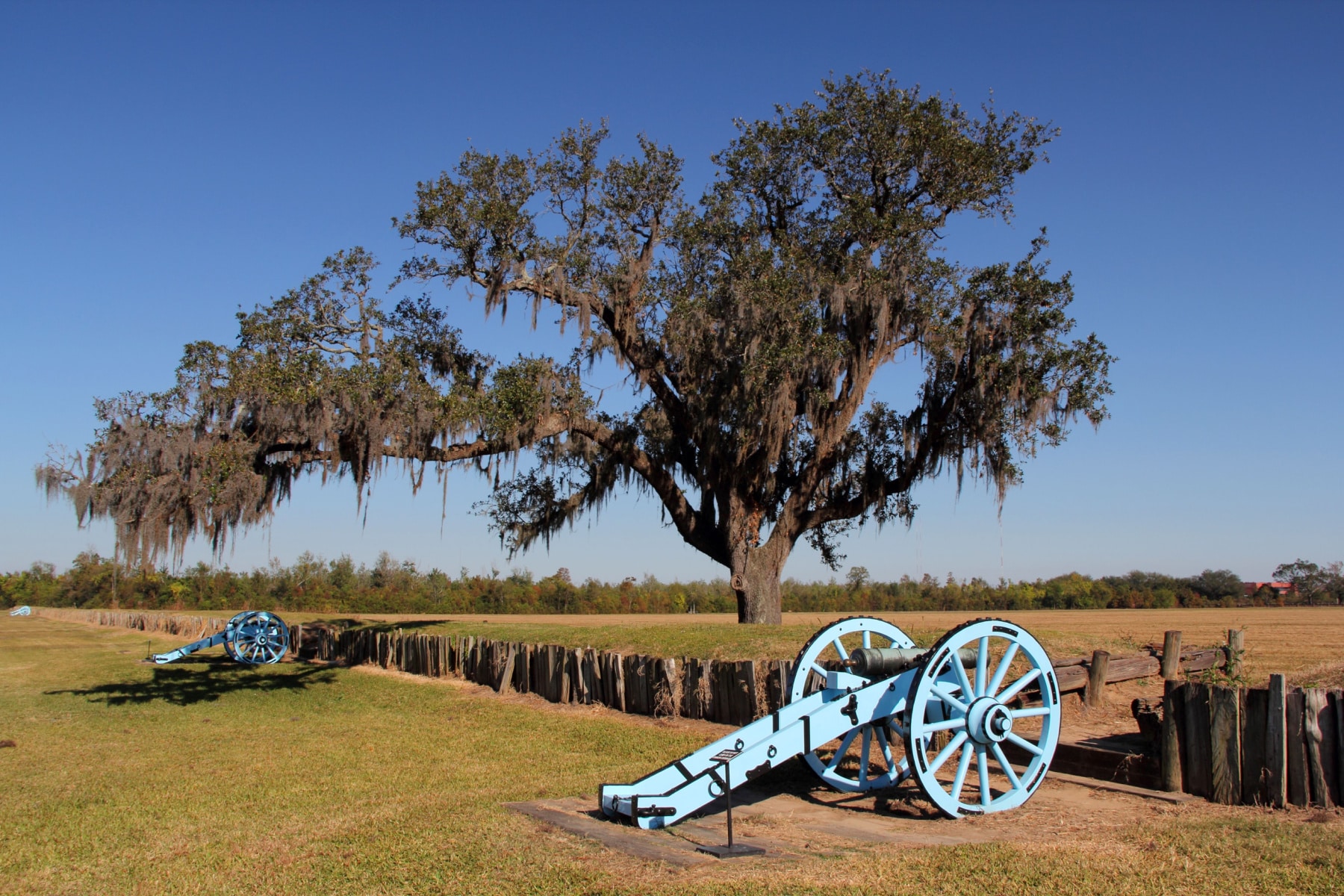
Top 5 New Orleans Landmarks
5. St. Louis Cathedral
We’re on to our Top 5 New Orleans Landmarks. Our next site is the oldest continuously active Roman Catholic Cathedral in the United States, originally built in 1727 and dedicated to King Louis IX of France, “The Crusading King” who was later canonized by the Church. At #5 is St. Louis Cathedral.
The first St. Louis Cathedral was constructed in 1789 when New Orleans was under Spanish rule. It replaced a smaller church that stood in the same location. The architect responsible for its design was Gilberto Guillemard, a Spanish military engineer. The original structure was a simple wooden building with a brick facade.
In 1788, a devastating fire swept through New Orleans, destroying much of the city, including the original St. Louis Cathedral. After the fire, Don Andres Almonester y Roxas, a wealthy philanthropist, provided funds for the construction of a new church. The Spanish government commissioned Don Gilberto Guillemard to design and oversee the construction of the new cathedral.
The second St. Louis Cathedral was completed in 1794, featuring a neoclassical architectural style influenced by the Spanish colonial period. It was constructed using bricks and covered with stucco. The cathedral’s most distinctive feature is its three spires, with the central spire rising to a height of 185 feet (56 meters). These spires have become iconic symbols of the New Orleans skyline.

Renovations & Expansions
Throughout its history, the St. Louis Cathedral has undergone several renovations and expansions. In the early 19th century, the cathedral was expanded to accommodate the growing Catholic population of New Orleans. The interior was embellished with beautiful artwork, including ornate altars and stained glass windows. Notable additions include the gilded altar, added in 1825, and the murals by local artist Dominique Canova, completed in 1847.
In 1850, Pope Pius IX elevated the St. Louis Cathedral to the rank of a minor basilica, giving it its official name, the Basilica of St. Louis, King of France. This designation recognized the historical and religious significance of the cathedral.
During the American Civil War, the St. Louis Cathedral suffered damage when a fire broke out in the French Quarter. However, it was quickly restored and continued to serve as a place of worship for the Catholic community.
St. Louis Cathedral Today
In the 20th century, the cathedral underwent significant renovations. In the 1930s, a major restoration project took place, led by architect Richard Koch. The project aimed to preserve the historic character of the cathedral while addressing structural issues. The renovation included the installation of a new organ, the reconstruction of the three spires, and repairs to the interior and exterior.
Today, the St. Louis Cathedral stands as an enduring symbol of New Orleans’ rich history and cultural heritage. It remains an active place of worship, hosting daily Masses, special religious ceremonies, and musical performances. Its picturesque setting in Jackson Square, overlooking the Mississippi River, makes it a popular destination for visitors and a cherished landmark in the city’s skyline.
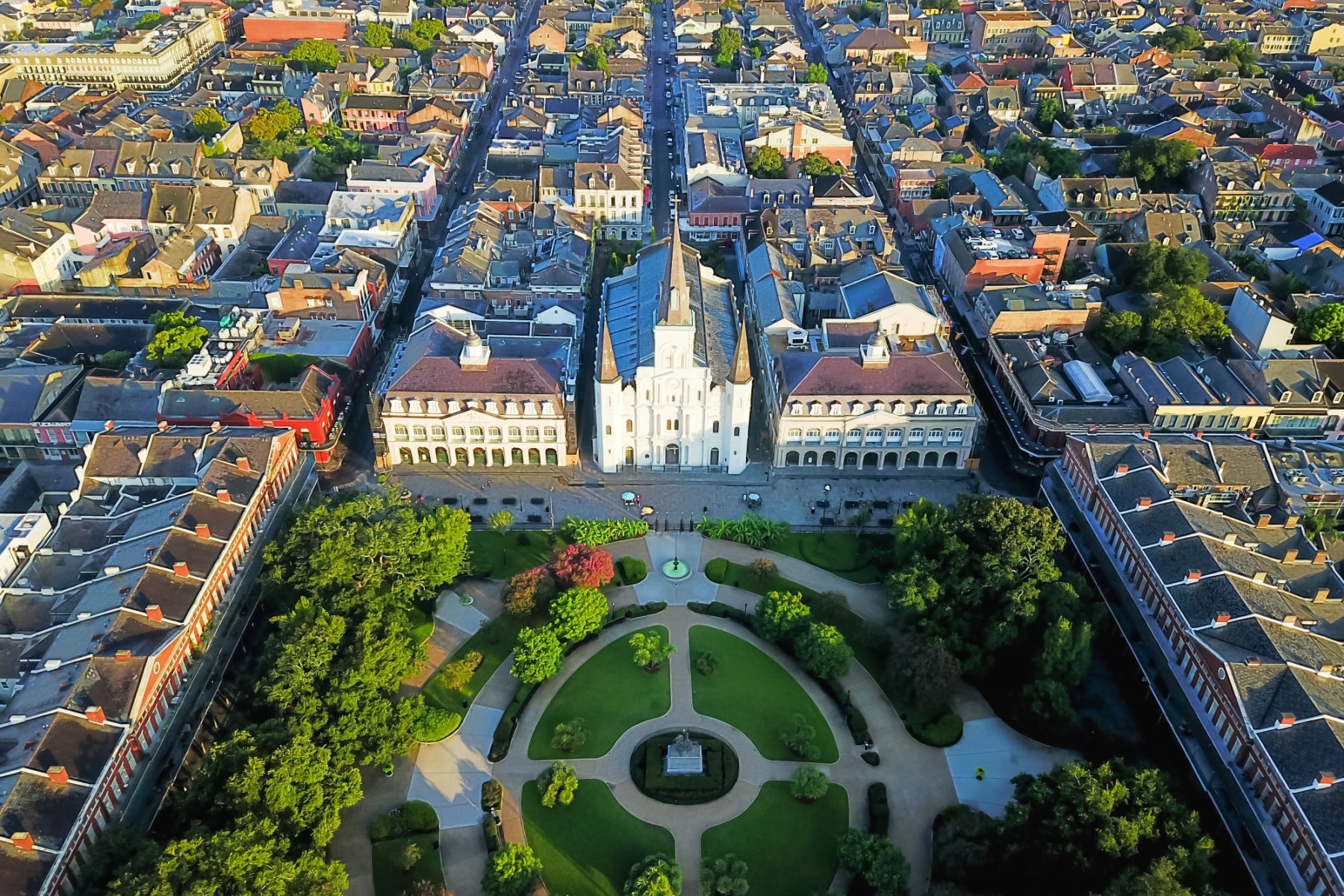
4. Jackson Square
We’re on to the “Final Four.” Our next New Orleans landmark became not only a focal point for local shipping and commerce, but also the heart of everyday life in New Orleans. At #4 on our list of the Best New Orleans Landmarks is Jackson Square.
The square was originally known as the Place d’Armes when it was established by the French colonial government in 1721. It served as a military parade ground during the French and Spanish colonial periods. In 1814, the square was renamed Jackson Square in honor of General Andrew Jackson, who led American forces to victory in the Battle of New Orleans during the War of 1812.
At the center of Jackson Square stands a prominent statue of Andrew Jackson on horseback. The statue, erected in 1856, pays tribute to the general’s significant role in defending the city. It has become a symbol of New Orleans’ resilience and identity.
Experience The Historic Buildings
Surrounding the square are historic buildings that contribute to its charm. The most notable structure is the St. Louis Cathedral, which we discussed earlier. Its towering spires create a striking backdrop for the square and add to its picturesque appeal.
Adjacent to the cathedral is the Cabildo, a Spanish colonial building that once served as the seat of government and is now part of the Louisiana State Museum. Another notable building is the Presbytère, which also houses a part of the Louisiana State Museum and offers insights into the city’s history and culture.
The square itself is adorned with beautiful landscaping, including well-manicured lawns, gardens, and paths. It provides a serene oasis in the midst of the bustling French Quarter. Visitors can stroll along the paths, relax on benches, and enjoy the scenery.
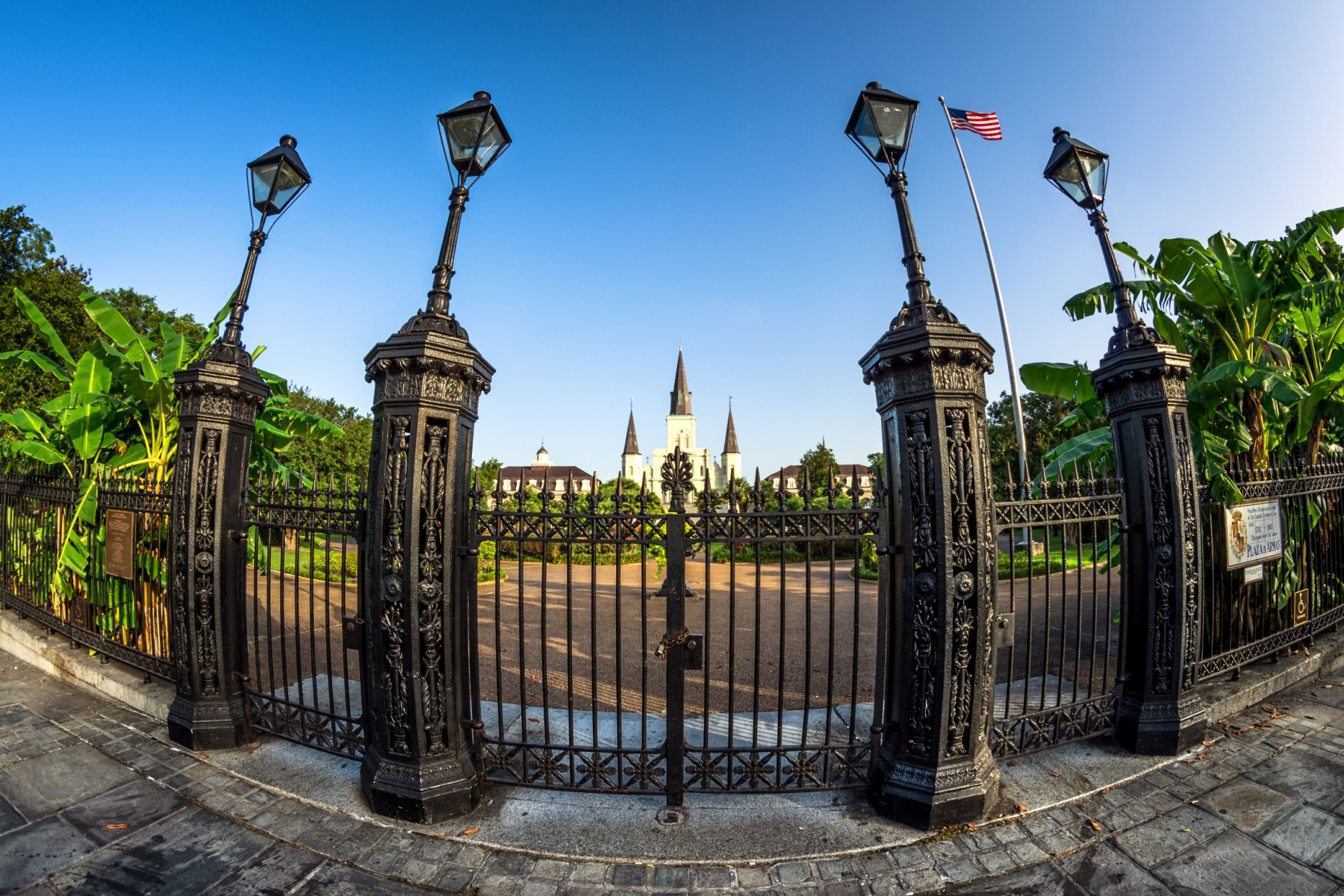
Jackson Square Today
The square serves as a popular gathering spot for festivals, parades, and cultural events throughout the year. It is a hub of activity during Mardi Gras celebrations, with elaborate floats passing by and revelers filling the streets. The square’s open space allows for large crowds to gather and enjoy the festivities.
Visitors to Jackson Square can immerse themselves in the unique atmosphere and experience the essence of New Orleans. They can explore the historic buildings, admire the artwork, listen to live music, and absorb the energy of this vibrant public space.
Whether you are interested in history, art, or simply enjoying the lively atmosphere, Jackson Square offers a captivating experience that truly embodies the spirit of New Orleans.
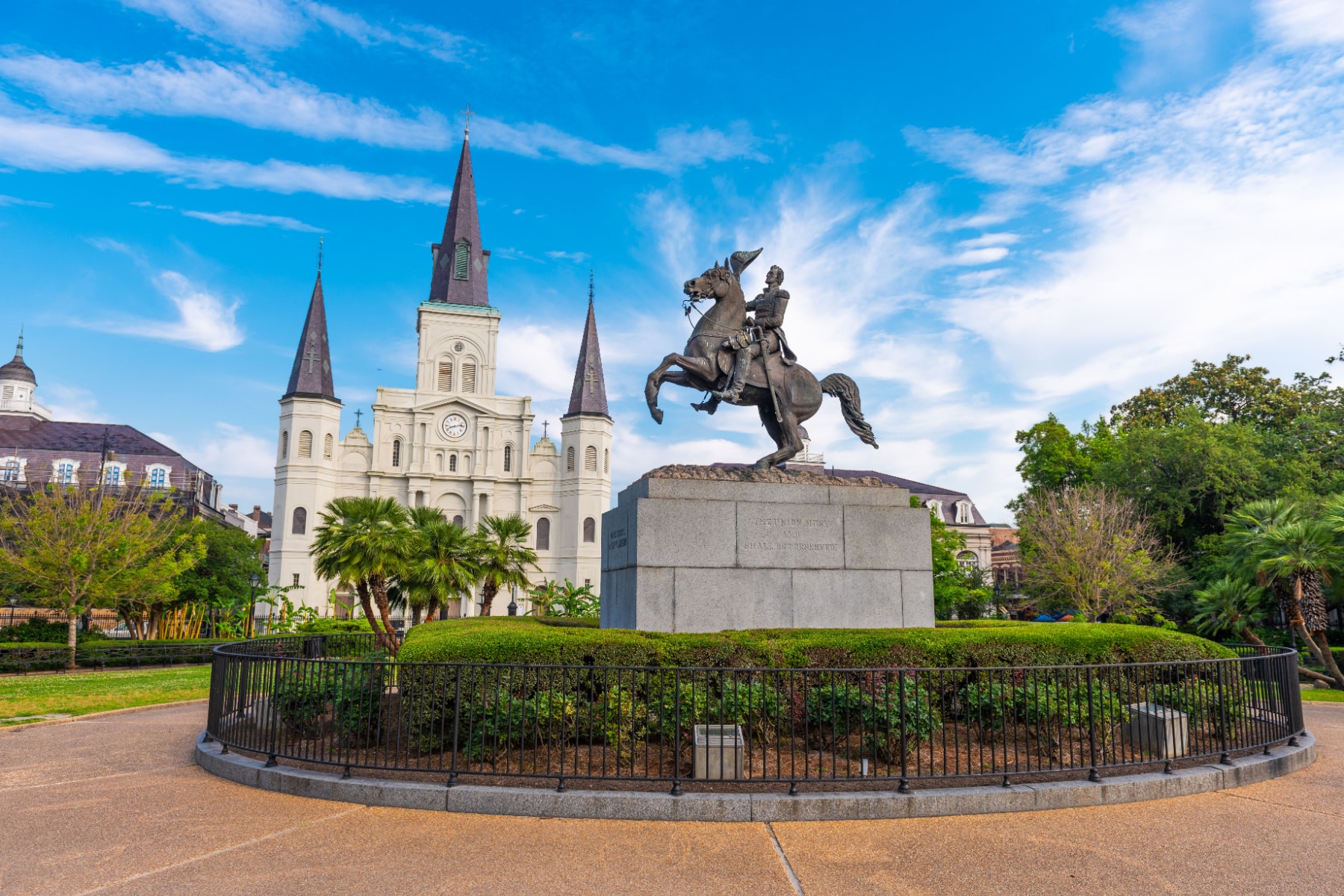
3. New Orleans Jazz National Historical Park
New Orleans is widely recognized as the birthplace of jazz and the sites and structures associated with the early history of jazz remain in the city. Jazz is America’s most widely recognized indigenous music art form; performance and appreciation of jazz is worldwide.
Our #3 New Orleans Landmark pays homage to this incredible history. Welcome to the New Orleans Jazz National Historical Park.
The park was established in 1994 to recognize the significant contributions that New Orleans and its musicians have made to the development and evolution of jazz.
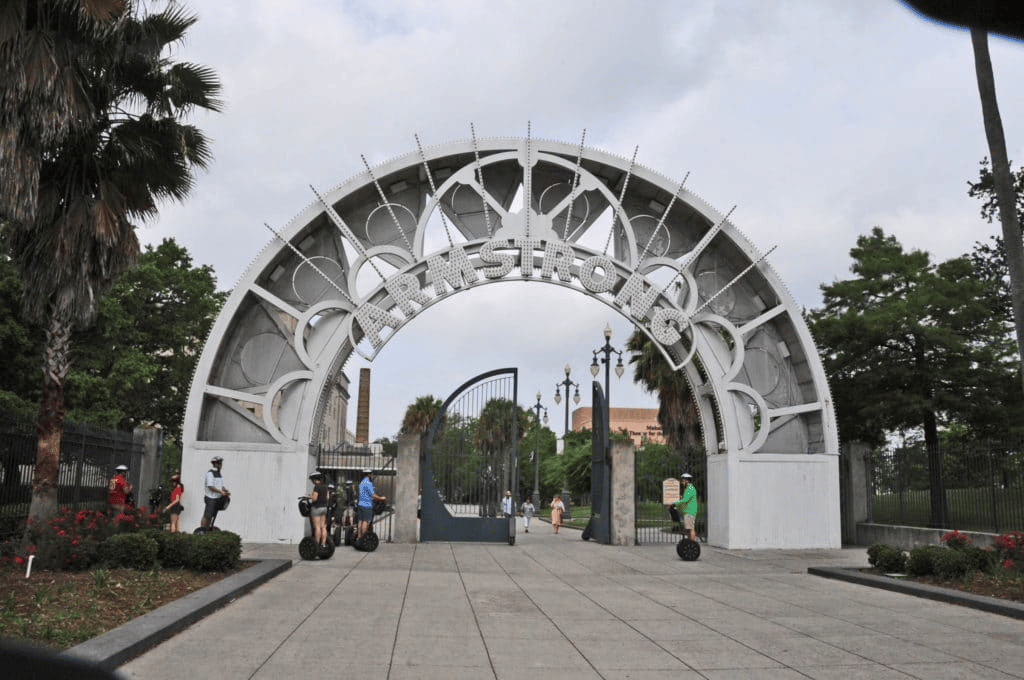
Things To Do
Here are some things to do at the New Orleans Jazz National Historical Park:
- Attend a concert: The park offers free live jazz performances by local musicians in its visitor center and other venues throughout the city. The concerts are a great way to experience the vibrant energy of New Orleans’ jazz scene and to discover new musicians.
- Take a guided tour: The park offers a variety of guided tours, including walking tours of historic jazz sites in the French Quarter, and tours of the park’s visitor center, which features exhibits on the history of jazz in New Orleans.
- Join a music workshop: The park offers music workshops for people of all ages and skill levels. These workshops cover a range of topics, including jazz improvisation, brass band music, and drumming.
- Visit the Jazz Museum: The park’s visitor center includes a jazz museum that showcases the history and development of jazz music in New Orleans. The museum features exhibits on jazz legends such as Louis Armstrong and Jelly Roll Morton, as well as interactive displays that allow visitors to explore the rhythms and sounds of jazz.
- Explore the French Quarter: The park is located in the heart of the French Quarter, a vibrant and historic neighborhood that is home to many of New Orleans’ most famous jazz clubs and music venues. Visitors can stroll through the streets, soak up the atmosphere, and listen to live music at some of the city’s most iconic jazz clubs.
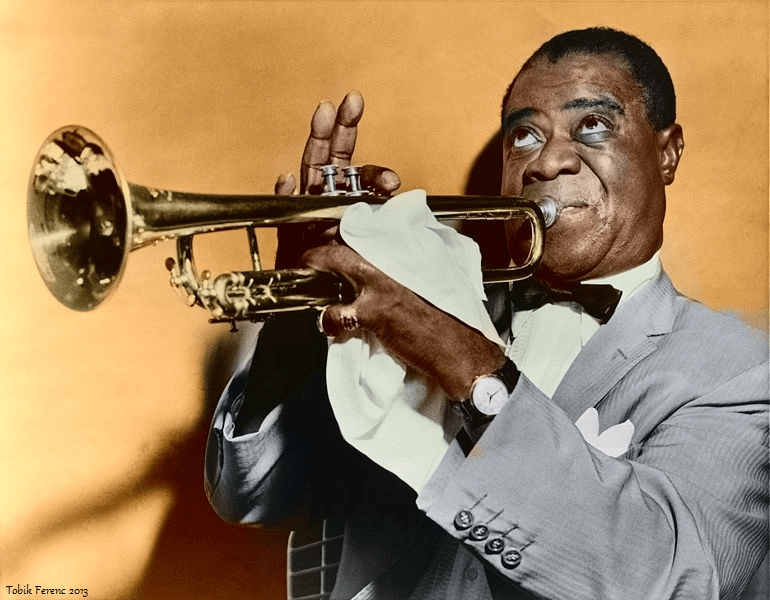
2. The National World War Two Museum
We’re on to our final 2 New Orleans landmarks. In the runner-up spot is a place which history buffs will love. It’s the National World War Two Museum.
What can you see at The National World War Two Museum? Perhaps a better question would be: What can’t you see? I’ve been there and this place is simply awe-inspiring. In my humble opinion, you won’t find a better museum anywhere in the world which tells the story of the United States in the Second World War.
Among the activities that you should see, I recommend the following:
- U.S. Freedom Pavilion: The Boeing Center
- Campaigns of Courage: The Road to Tokyo and The Road to Berlin
- Traveling Exhibits: Fighting for the Right to Fight; Manufacturing Victory: The Arsenal of Democracy; Infamy: December 1941
- Louisiana Memorial Pavilion
- Kushner Restoration Pavilion
- Beyond All Boundaries
- Final Mission: The USS Tang Experience
- The Merchant Marine Gallery
- The Soda Shop
- The National World War II Museum Store

National World War Two Museum | Courtesy of Wikimedia Commons
The New Orleans Factor
The museum features the story of a New Orleans native named Andrew Higgins. What did he do? Well, according to Supreme Allied Commander Dwight D. Eisenhower, Higgins was “the man who won the war for us.”
Higgins, a local industrialist, and his 30,000 employees here in New Orleans built more than 20,000 “Higgins boats.“ Capable of carrying 36 combat-equipped infantrymen, a Jeep and 12 troops, or 8,100 pounds of cargo, the LCVP featured a crew of four and could float in 3 feet of water, reach a speed of 12 knots, and was protected by two .30 caliber machine guns.
Used in North Africa, Italy, France and across the Pacific, and by the U.S. Army to cross the Rhine River into Germany in March 1945, the Higgins Boat became the standard personnel landing craft for the military during World War II.
There’s a gallery space in the museum dedicated to Higgins and his company’s creation, and it is a powerful testament to the American ingenuity that was so integral to defeating the Axis powers.
If you’re interested in learning more then I heartily recommend Andrew Higgins and the Boats That Landed Victory in World War II by Nancy Rust & Carol Stubbs.
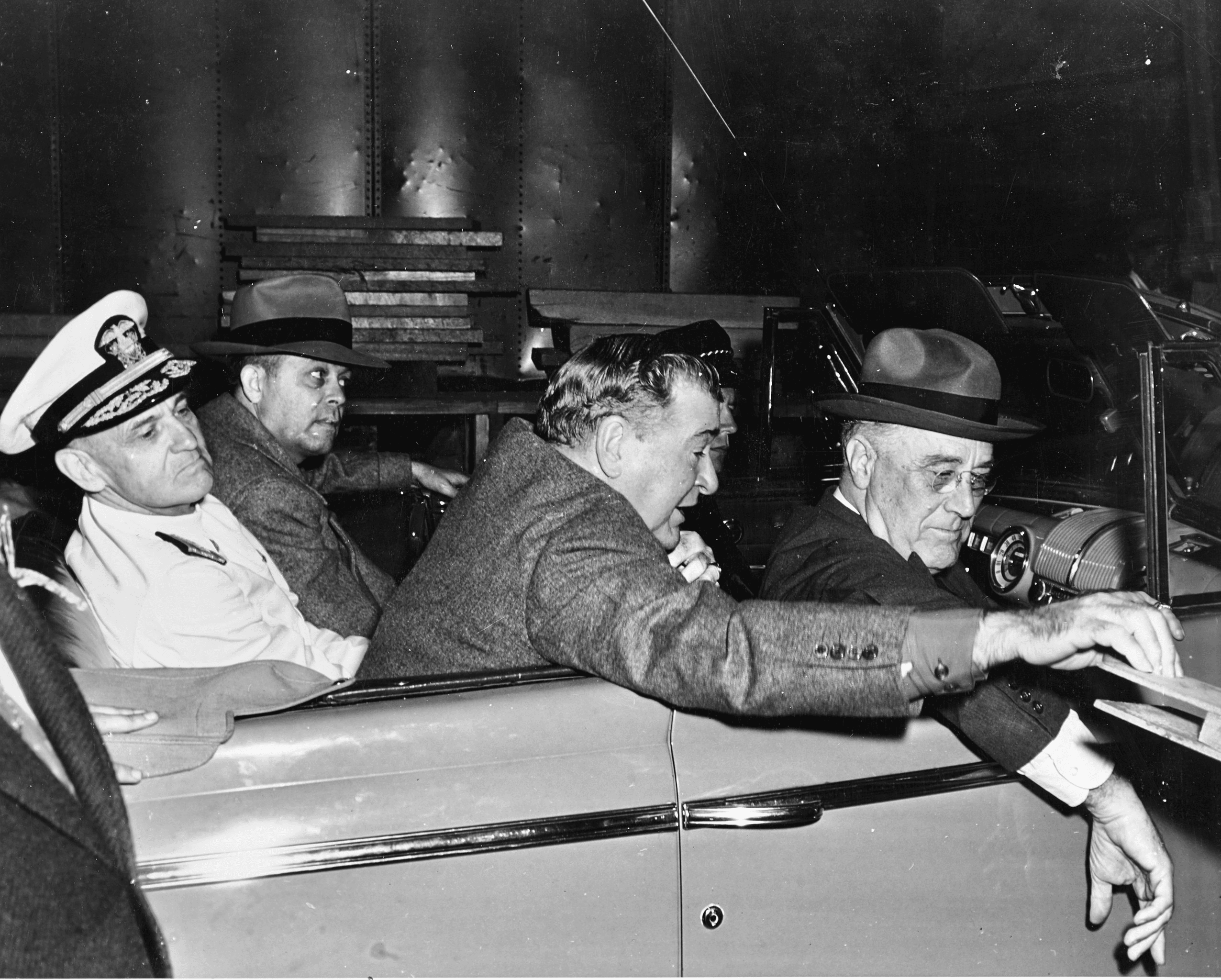
1. French Quarter
As the #1 New Orleans landmark, More Than Just Parks has selected the French Quarter.
The French Quarter traces its origins back to 1718 when Jean-Baptiste Le Moyne de Bienville, a French colonist, founded the city of New Orleans. Bienville chose this location because of its strategic position near the Mississippi River and Lake Pontchartrain. The area was initially laid out in a grid pattern, reminiscent of French colonial planning.
During the French colonial period, the area was known as the Vieux Carré, meaning “Old Square.” The district quickly became a bustling center of trade, commerce, and cultural exchange. The French Quarter became home to a diverse population, including French, Spanish, African, and Caribbean immigrants, contributing to its unique and multicultural character.
In 1763, the French Quarter came under Spanish rule through the Treaty of Paris, which marked the end of the French and Indian War. The Spanish brought their own influences to the architecture, culture, and administration of the district.
The French Quarter In The 19th Century
In 1803, the United States acquired the Louisiana Territory from France in the Louisiana Purchase. This marked a significant turning point for the French Quarter, as it transitioned from a European colonial settlement to an American city. The American influence brought new waves of immigrants and further enriched the cultural fabric of the neighborhood.
Throughout the 19th century, the French Quarter thrived as a vibrant commercial center. The district was known for its thriving markets, shops, and businesses. However, it also faced challenges, including devastating fires and occasional flooding.
In the late 19th and early 20th centuries, the French Quarter experienced a period of neglect and decline. Many wealthier residents moved to newer neighborhoods, leaving behind historic buildings that fell into disrepair. However, in the 1920s, a revitalization movement emerged, led by preservationists who recognized the architectural and cultural significance of the area.
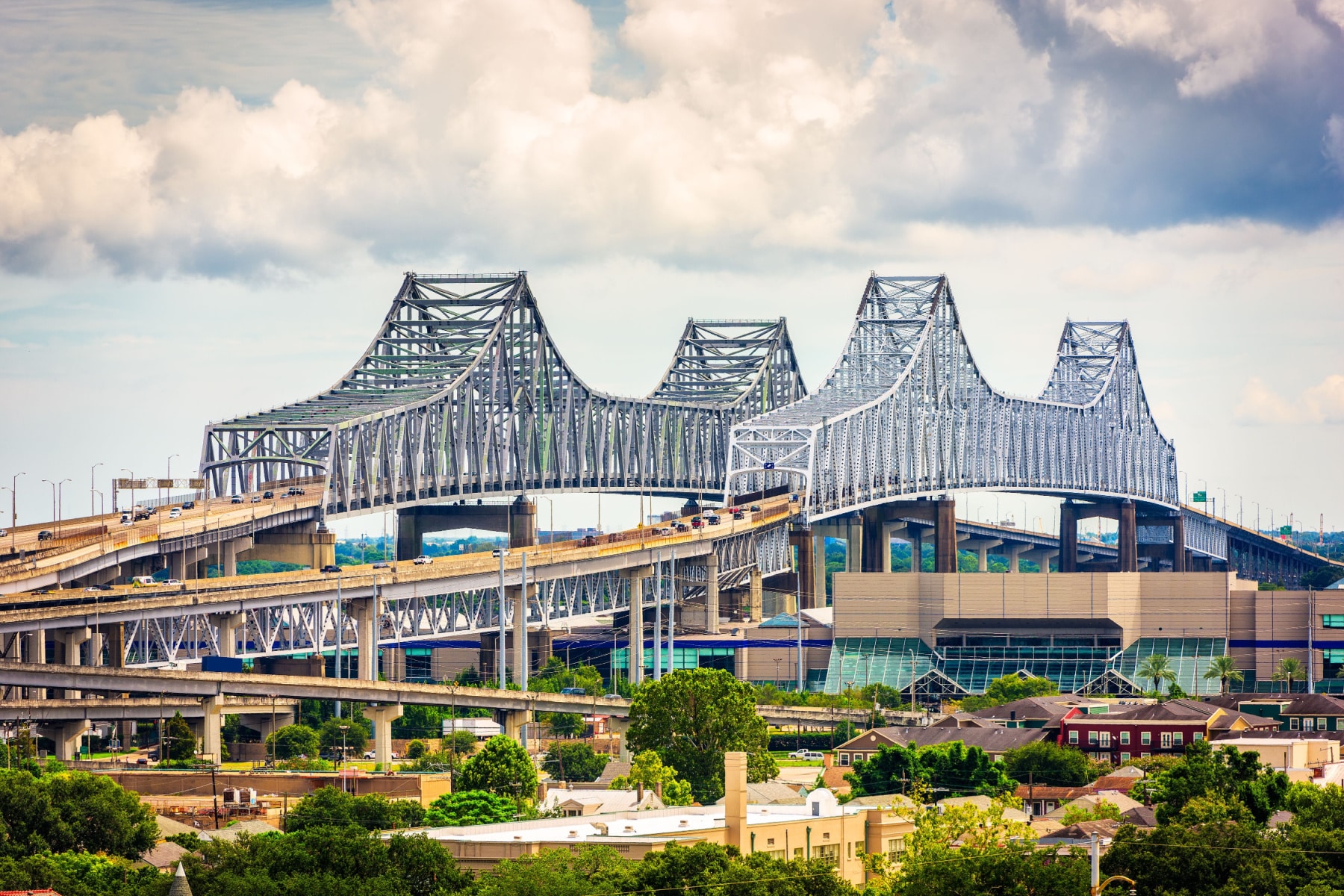
The French Quarter Today
In the 1930s, the Works Progress Administration (WPA) conducted extensive renovations and restoration projects in the French Quarter. This effort aimed to preserve the district’s unique character and protect its historic buildings. The WPA’s work helped establish the French Quarter as a protected historic district.
Today, the French Quarter is a vibrant and bustling neighborhood renowned for its charming architecture, lively atmosphere, and rich cultural heritage. It is home to iconic landmarks such as Jackson Square, the St. Louis Cathedral, and Bourbon Street. The area is known for its distinctive Creole townhouses, ornate cast-iron balconies, and hidden courtyards.
The French Quarter has also retained its reputation as a cultural hub. It hosts numerous festivals, including Mardi Gras, the New Orleans Jazz & Heritage Festival, and the French Quarter Festival. Its streets are lined with art galleries, music clubs, jazz bars, and renowned restaurants serving Creole and Cajun cuisine.
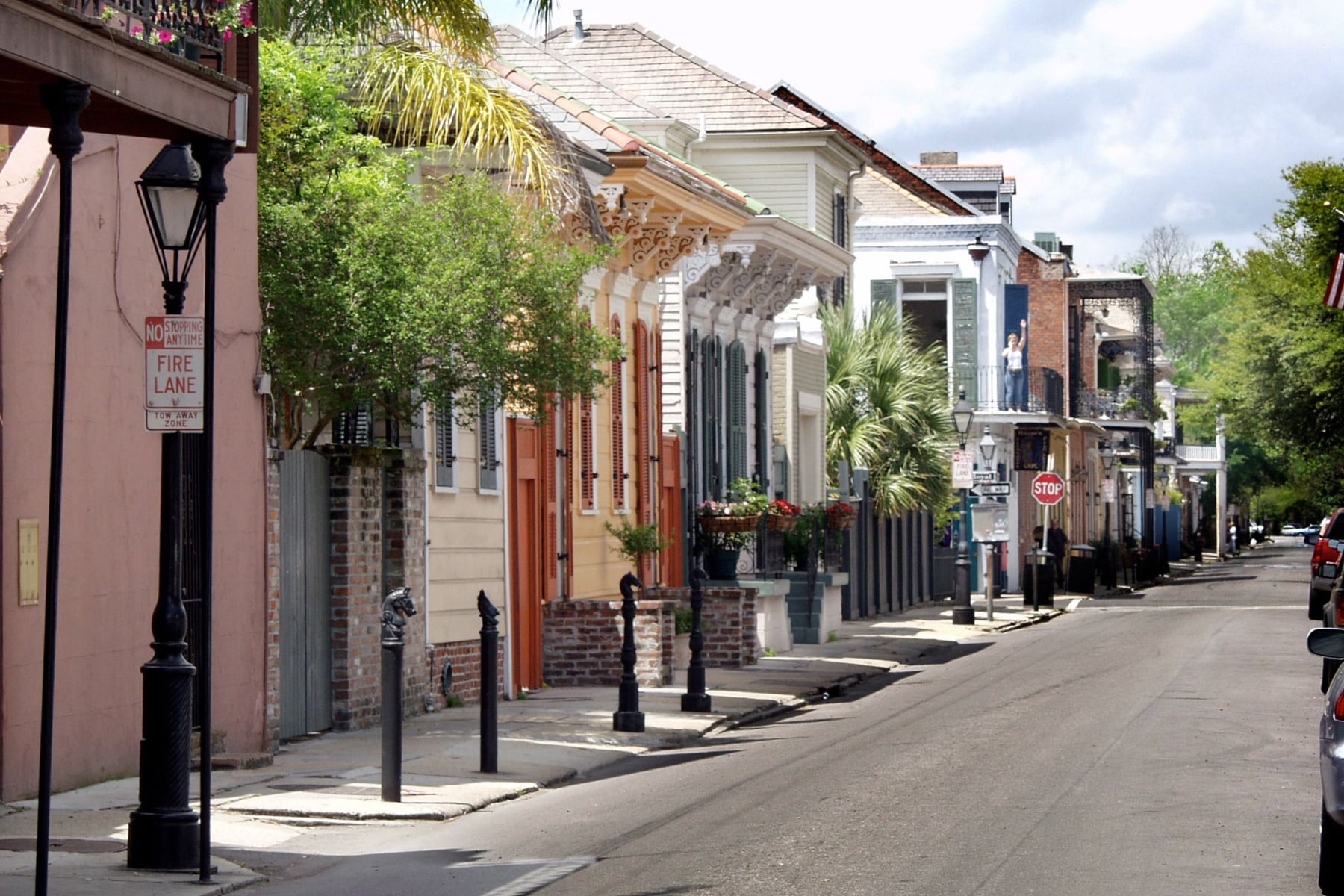
Map Of New Orleans Landmarks
List Of New Orleans Landmarks
- French Quarter
- National World War Two Museum
- New Orleans Jazz National Historical Park
- Jackson Square
- St. Louis Cathedral
- Chalmette National Historical Park
- St. Louis Cemetery No. 1
- Preservation Hall
- Historic Garden District
- Bourbon Street
Why Trust Us About New Orleans Landmarks?
We’re Jim Pattiz and Will Pattiz, collectively known as the Pattiz Brothers and we absolutely LOVE the national parks.
You should probably know that we don’t just make this stuff up out of thin air. We’ve spent our entire adult lives exploring and filming America’s national parks and public lands.
We’ve worked with the National Park Service, the Department of Interior, USDA, U.S. Forest Service, and more for years creating films on important places and issues. Our work has been featured in leading publications all over the world and even some people outside of our immediate family call us experts on the national parks.
And, in 2018, our father – having spent a lifetime teaching history – joined us so that he could help us to tell the stories behind these amazing places.
Meet The Parks Brothers
We Hope You’ll Follow Our Journey

Our goal here at More Than Just Parks is to share the beauty of America’s national parks and public lands through stunning short films in an effort to get Americans and the world to see the true value in land conservation.
We hope you’ll follow our journey through the parks and help us to keep them the incredible places that they are. If you’re interested in joining the adventure then sign up below!
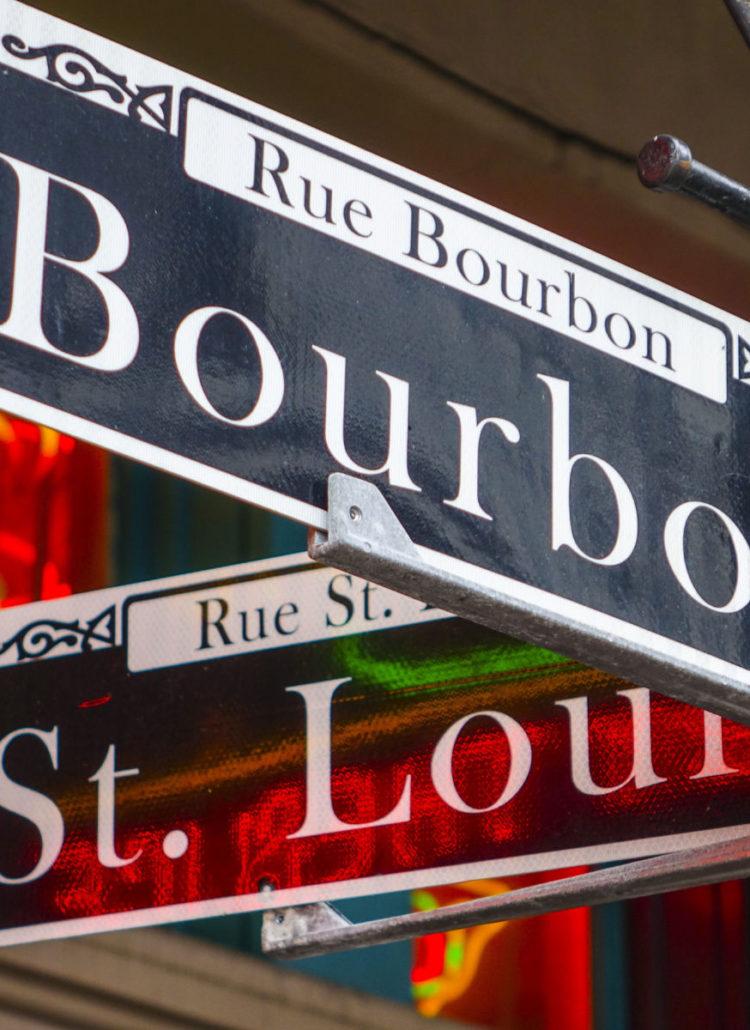


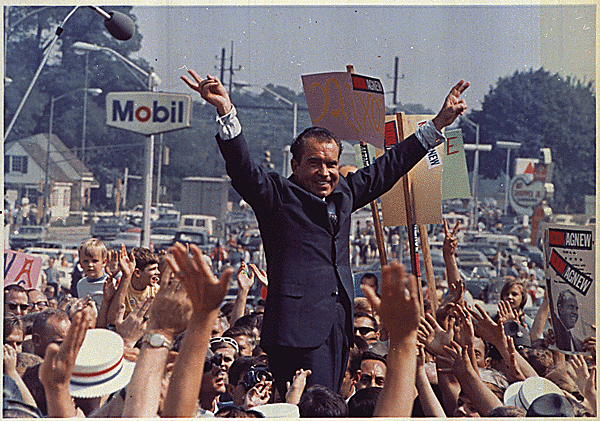

Leave a Reply